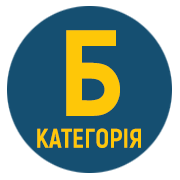PEDAGOGICAL COMMUNICATION: FEATURES, LAWS, FUNCTIONS
Keywords:
communication, pedagogical communication, interlocutor, functions of communication, laws of communication, stages of communicationAbstract
The article analyzes the essential characteristics of the process of information exchange: the meaning of the terms «communication», «pedagogical communication» is highlighted. It is indicated that the ambiguity of the concept of «communication» is due to its importance for a full-fledged human activity. It is noted that the criterion of the effectiveness and success of the professional activity of the teacher is to a certain extent determined by the level of masterful mastery of the word, the culture of speech, the ability to tell the information and convince of its correctness other participants in the educational process. The functions as an external manifestation of the properties of communication, those tasks that it realizes in the process of activity of the individual in society, which are inherent in the process of communication, namely: contact, informational, stimulating, coordination, cognitive, emotional, relationship formation, regulatory are described.
The laws of communication (the law of the mirror development of communication, the law of the dependence of the effectiveness of interaction on the efforts spent, the law of progressive growth, the impatience of listeners, the law of reducing the level of intelligence of the audience with an increase in its number, the law of communicative self-preservation, the law of the rhythm of communication, the law of speech self-interaction) are analyzed. The research concerns the law of confidence in clear statements, the law of attraction of criticism, the law of self-discovery of information, the law of modification of the non-standard behavior of communicators, the law of accelerated dissemination of negative information, the law of distortion of information, the law of emotional affiliation, speech law to empower emotion, the law of speech of emotions absorption, law of emotional suppression of logic.
References
Пасинок В. Г. Основи культури мовлення: навч. посібник / В. Г. Пасинок. – К.: «Вид-во «Центр учбової літератури», 2012. – 184 с.
Шевчук С. В. Українська мова за професійним спрямуванням: підручник / С. В. Шевчук. – К.: Алерта, 2012. – 696 с.
Великий тлумачний словник сучасної української мови (з дод., допов. та СD) / уклад. і голов. ред. В.Т. Бусел. – К.; Ірпінь: ВТФ «Перун», 2009. – 1736 с.: іл.
Бацевич Ф. С. Основи комунікативної лінгвістики: підручник / Ф. С. Бацевич. – К.: Академія, 2004. – 344 с.
Правова міжкультурна комунікація: до ЄВРО-2012: навч. посібник / О. Бойко, Н. Казимир, Б. Кравець, С. Кость, Г. Ойцевіч, А. Токарська, О. Федишин, О. Цибух; за заг. ред. д-ра юрид. наук А. Токарської. – Львів: ЛьвДУВС, 2011. – 240 с.
Чайка Г. Л. Культура ділового спілкування менеджера: навч. посібник / Г. Л. Чайка. – К.: Знання, 2005. – 442 c.





